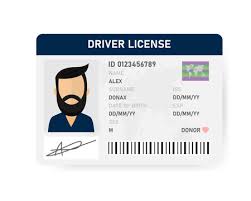Target Audience
Introduction: The Importance of Understanding Your Target Audience (800-1,000 words)
- Overview: Introduce the critical importance of knowing your target audience in today's competitive market landscape. Explain why audience understanding is at the heart of effective marketing and business growth.
- Objective: Describe the main goal of the “Target Audience” product—how it helps businesses identify, analyze, and engage with their ideal customer groups.
- Real-world Example: Share an example of a successful brand that effectively utilized target audience insights to transform their marketing efforts and boost sales.
Chapter 1: Product Features of “Target Audience” (1,200-1,500 words)
- Key Features: Outline the core functionalities of the “Target Audience” product. Include details like:
- Customer Segmentation Tools: How it segments customers based on demographics, psychographics, and behavior.
- Data Visualization: Highlight the ease of use with data dashboards that offer visual insights into customer behavior.
- Predictive Analysis: Discuss how predictive analytics can forecast customer trends and behaviors, helping businesses stay ahead.
- Integration Capabilities: Detail how the product integrates with other CRM and marketing automation tools, making it versatile for businesses of all sizes.
- Unique Selling Proposition (USP): Define what sets this product apart from competitors—its precision, user-friendly interface, or deep analytics capabilities.
- Case Study: Provide a brief case study showing how a company used the product to gain deeper insights into their customer base and the tangible results achieved.
Chapter 2: Market Analysis: Understanding the Landscape (1,500-2,000 words)
- Market Overview: Analyze the current market landscape for products focused on customer insights and audience analysis. Include statistics and trends related to the demand for such tools.
- Competitive Analysis: Identify key competitors in the market, comparing their offerings with the “Target Audience” product. Discuss where “Target Audience” stands out.
- Growth Opportunities: Highlight areas of growth in this market, such as increased demand for AI-driven insights and predictive customer analytics.
- Market Challenges: Address challenges in the industry, like data privacy concerns and the complexity of integrating data across multiple channels. Explain how the “Target Audience” product tackles these issues.
Chapter 3: Detailed Target Audience Analysis (1,500-2,000 words)
- Who is the Target Audience for This Product?: Define the ideal customers for the “Target Audience” product, such as:
- Small to Medium-sized Enterprises (SMEs): Businesses looking to improve their marketing efficiency.
- Marketing Agencies: Agencies needing robust tools for segmenting and analyzing client audiences.
- Large Enterprises: Companies that require detailed analytics to manage their extensive customer bases.
- Customer Pain Points Addressed: Identify common challenges these segments face, such as inefficient customer segmentation or difficulties in tracking campaign effectiveness.
- Behavioral Traits and Motivations: Discuss the behaviors and motivations that drive these businesses to seek out a solution like “Target Audience”—the need for improved conversion rates, streamlined marketing campaigns, or enhanced customer understanding.
- Persona Development: Create detailed personas for the target market, highlighting their goals, challenges, and how the product can be a game-changer for them.
Chapter 4: How to Use “Target Audience” to Drive Results (1,200-1,500 words)
- Step-by-step Guide: Provide a practical walkthrough of how to use the product effectively:
- Setting Up Customer Segments: How to categorize customers by different criteria like age, location, and purchasing behavior.
- Interpreting Data: Tips on reading the data visualizations and insights provided by the product.
- Integrating with Marketing Campaigns: Strategies for using the audience data to personalize marketing campaigns and boost engagement.
- Best Practices: Share best practices for using customer insights to optimize marketing strategies, such as A/B testing based on audience segments.
- Common Pitfalls to Avoid: Identify common mistakes users make when analyzing their audience and how to avoid them for better results.
Chapter 5: Success Stories and Case Studies (1,000-1,200 words)
- Case Study 1: A Small Business Success: How a local boutique used “Target Audience” to refine their marketing strategy and increase foot traffic.
- Case Study 2: Scaling Success for an E-commerce Platform: Illustrate how an online retail business used the product to identify high-value customers and drive repeat sales.
- Expert Testimonial: Share a testimonial from a marketing professional or business owner who benefited from the product, adding credibility and real-world validation.
Chapter 6: Benefits of Using “Target Audience” (1,200-1,500 words)
- Improved Customer Understanding: Discuss how understanding customer demographics, behavior, and needs helps businesses make informed decisions.
- Enhanced Marketing ROI: Explain how targeted marketing efforts can save time and money, leading to a higher return on investment (ROI).
- Personalized Customer Experience: Show how using the product leads to better customer engagement through personalized communication and offers.
- Staying Ahead of Market Trends: Discuss the role of audience insights in adapting to market changes and customer preferences quickly.
Chapter 7: Future Trends in Audience Analysis and Product Evolution (1,000-1,200 words)
- The Role of AI and Machine Learning: Explore how AI-driven tools are changing the landscape of audience analysis.
- Customer Data Privacy and Ethics: Discuss emerging regulations and how the “Target Audience” product ensures data security and compliance.
- Adapting to Evolving Consumer Behaviors: Highlight the importance of staying adaptable to changing consumer behaviors and how the product can help businesses do this.
- Potential Product Upgrades: Speculate on future updates or features that could make the product even more valuable to businesses.
Conclusion: Empowering Businesses with the Right Audience Insights (500-800 words)
- Summary: Recap the importance of understanding the target audience and how this product provides businesses with a competitive advantage.
- Call to Action: Encourage readers to explore the “Target Audience” product and see how it can transform their approach to marketing.
- Final Thought: Emphasize the importance of continuous learning about customer needs and staying ahead of market trends for long-term success.
Related News
Read More >>
 Best fake ID features
Best fake ID features
Meta Description (Inspiring Snippet)“Looking to understand what makes the best f
 Target Audience
Target Audience
Discover the essential strategies and insights to mastering the “Target Audience” product. This in-d...
 photo ID software
photo ID software
Learn how cutting-edge Photo ID Software enhances identity verification, reduces fraud, and provides...
 Texas Fake ID Benefits
Texas Fake ID Benefits
This article explores the cultural, social, and commercial aspects of fake IDs, focusing on Texas. W...